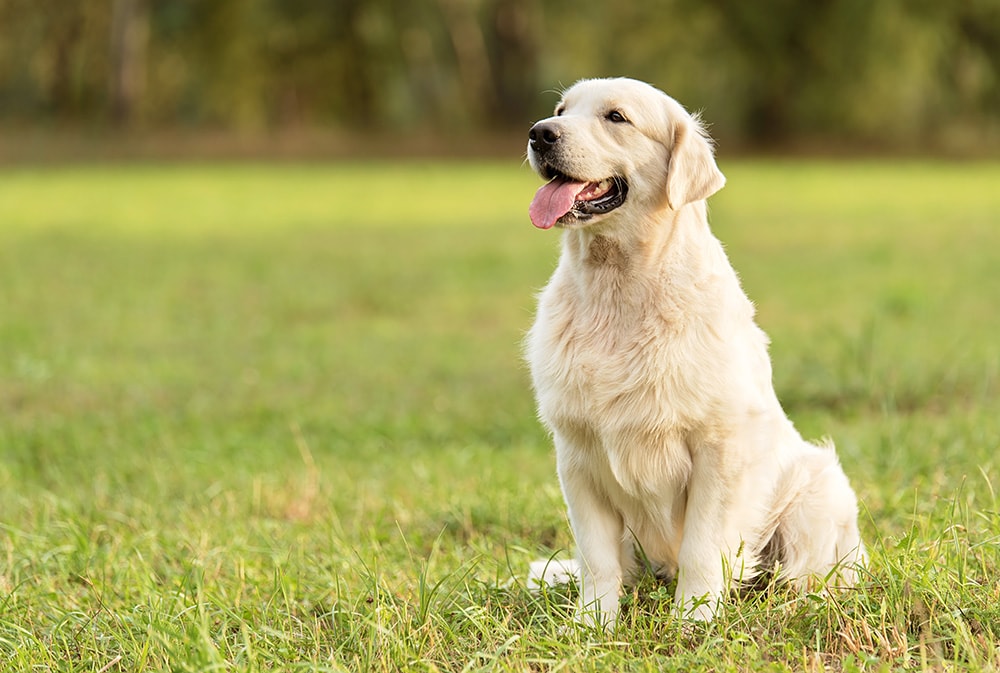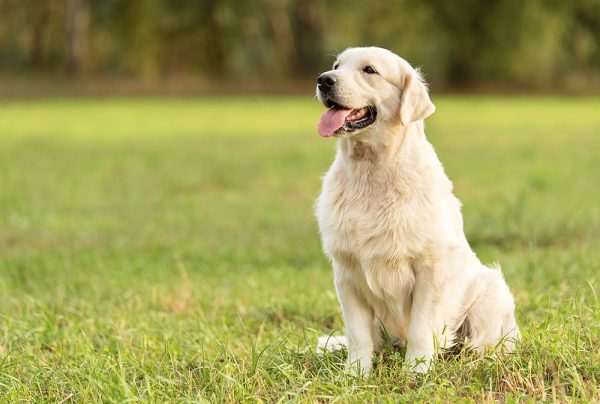More than a quarter of the adult population in the UK own a dog, with nearly 10 million dogs across the country. And, during lockdowns in 2020 especially, the number of dogs owned increased dramatically. Although the number dropped as people returned to work in 2021, we are clearly still a nation of dog lovers!
When it comes to the most popular breeds, mixed breeds are by far the most popular, despite not really being a true breed. And, unsurprisingly, the Labrador Retriever, renowned for its love of family and its playful but gentle nature, is the next most popular group of dogs.
Read on to find the 20 most popular dog breeds in the UK according to figures from The Kennel Club and owner surveys.
The Top 20 Most Popular Dog Breeds in the UK
1. Mixed Breed
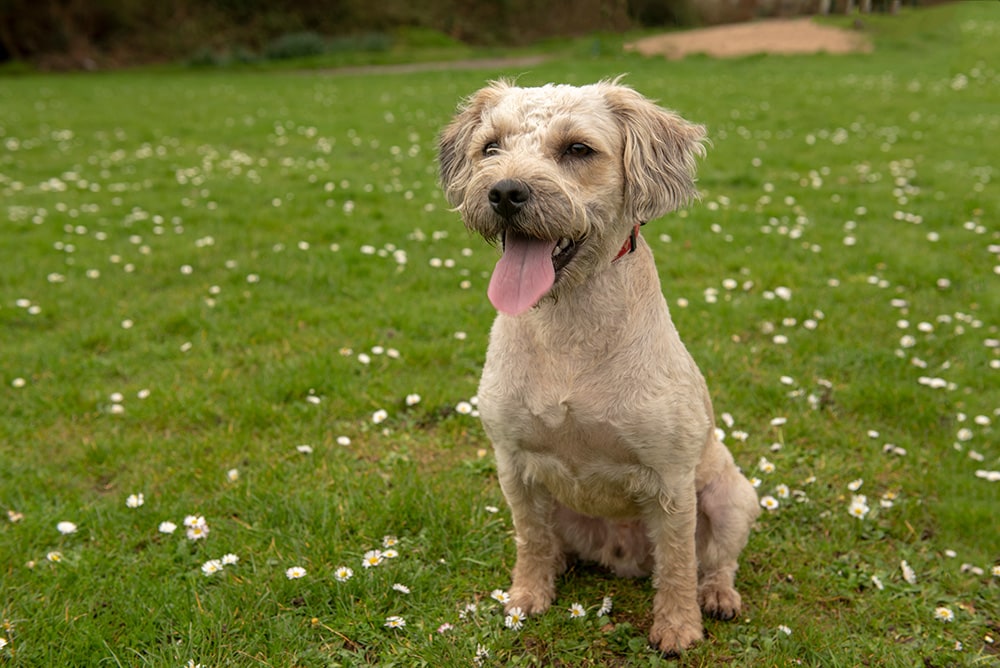
| Size: | Various |
| Lifespan: | Various |
| Colours: | Various |
| Dog Group: | Various |
| Family Dog: | Various |
| Exercise Demands: | Various |
| Grooming Needs: | Various |
It’s not really a true breed and the Kennel Club doesn’t recognise mixed breed dogs, but it is—by far—the most popular of all types of dogs. A mixed breed has three or more breeds in its lineage. A dog with a single breed in its lineage is a purebred, while a dog with two breeds is considered a hybrid, crossbreed, or designer dog.
Mixed breed dogs vary in size, colours, and temperament, and individual character determines whether a mixed breed dog is suitable for families or individual owners. There is a suitable mixed breed dog out there for every potential owner.
- Sometimes said to have hybrid vigour, reducing the chance of genetic conditions
- Potentially unique markings and patterns
- Less chance of inherited illnesses
- Difficult to predict physical size of a crossbred puppy
- Potentially difficult to predict temperament of a mixed breed
2. Labrador Retriever
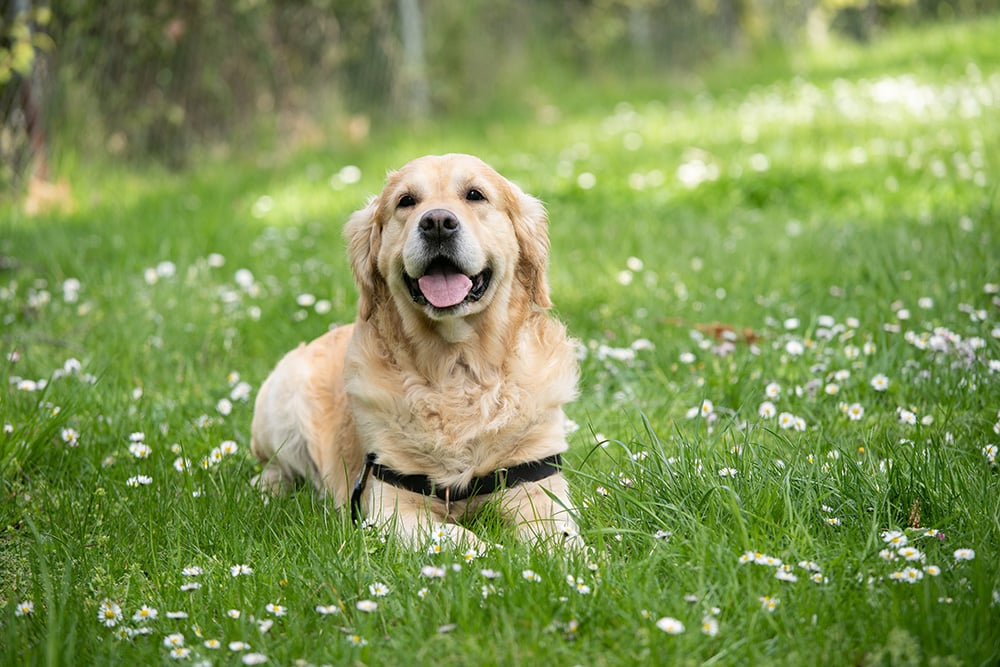
| Size: | Large |
| Lifespan: | 10–14 years |
| Colours: | Black, Gold, Chocolate |
| Dog Group: | Gundog |
| Family Dog: | Yes |
| Exercise Demands: | Moderate to High |
| Grooming Needs: | Moderate to High |
The Labrador Retriever consistently appears at the top of the list of most popular dog breeds. It is known for being a loving family dog that is energetic and fun. However, it was originally bred as a working dog and primarily used to assist fishermen with their daily duties. They have also been used as hunting dogs.
Today, they are more likely to be seen as family pet or working as therapy dogs, police dogs, and search-and-rescue dogs. They do require plenty of exercise to ensure they aren’t overweight, and you should ensure good training to ensure they grow up to be well-adjusted dogs.
- Very friendly nature
- Typically a healthy breed
- Trainable
- Can be very energetic
3. Cockapoo

| Size: | Small |
| Lifespan: | 12–15 years |
| Colours: | Black, Brown, Tan, White |
| Dog Group: | Designer |
| Family Dog: | Yes |
| Exercise Demands: | Moderate |
| Grooming Needs: | High |
The Cockapoo is a designer breed and could arguably be considered the first designer dog. It is a cross between the Cocker Spaniel and the Poodle. Its size is ultimately determined by the size of Poodles in its lineage, but the majority are considered small to medium dogs.
The Cockapoo is a friendly dog that will get along with family, friends, neighbours, visitors, and strangers. It is a friendly breed that, although it doesn’t require excessive amounts of exercise, is prone to fits of playfulness. Although no breed is truly hypoallergenic, the Cockapoo does come close, but it does require some grooming and tending, thanks to its Poodle parentage.
- Lively dog that enjoys playing
- Friendly with just about everybody
- Doesn’t require excessive walks
- Considered a somewhat hypoallergenic breed
- Needs regular grooming
- Can be extremely lively and boisterous
4. French Bulldog
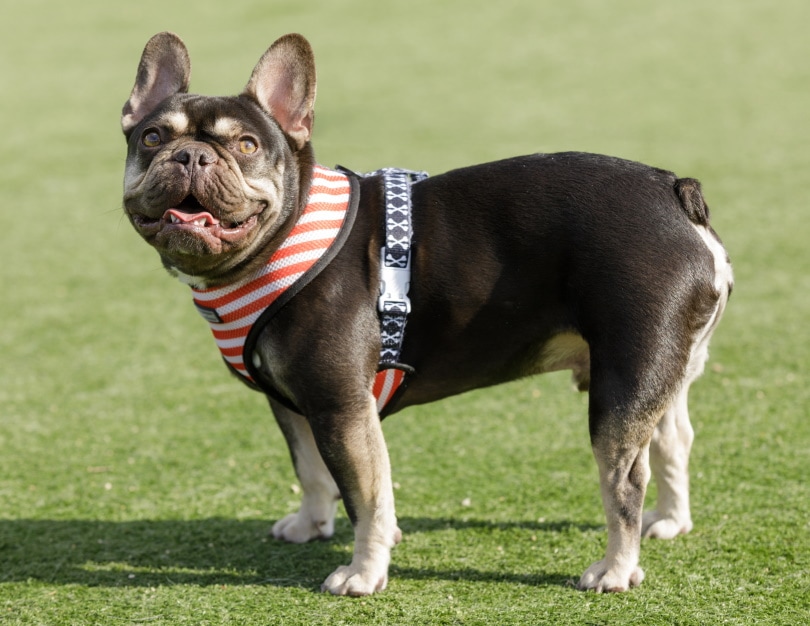
| Size: | Small |
| Lifespan: | 11–14 years |
| Colours: | White, Brindle, Fawn, Tan |
| Dog Group: | Companion |
| Family Dog: | Yes |
| Exercise Demands: | Moderate |
| Grooming Needs: | Moderate |
The French Bulldog is a small dog that was bred for companionship and remains one of the most popular companion breeds. Although small, the breed is stockily built. It has a coat that is relatively easy to care for. Its love of exercise is matched by its love of lounging around, with the dogs’ size making it the ideal pup for sleeping on your lap.
Training is considered easy because the breed is intelligent and enjoys games but they can be independent, so they may not always choose to respond to commands given. The French Bulldog is prone to separation anxiety and will expect to be taken everywhere with you. This breed is also prone to certain genetic conditions and illnesses.
- Intelligent and can be trained
- Loving and friendly nature
- Coat is easy to care for
- Suffers from separation anxiety
- Doesn’t always listen to commands
- Prone to illness
5. Cocker Spaniel
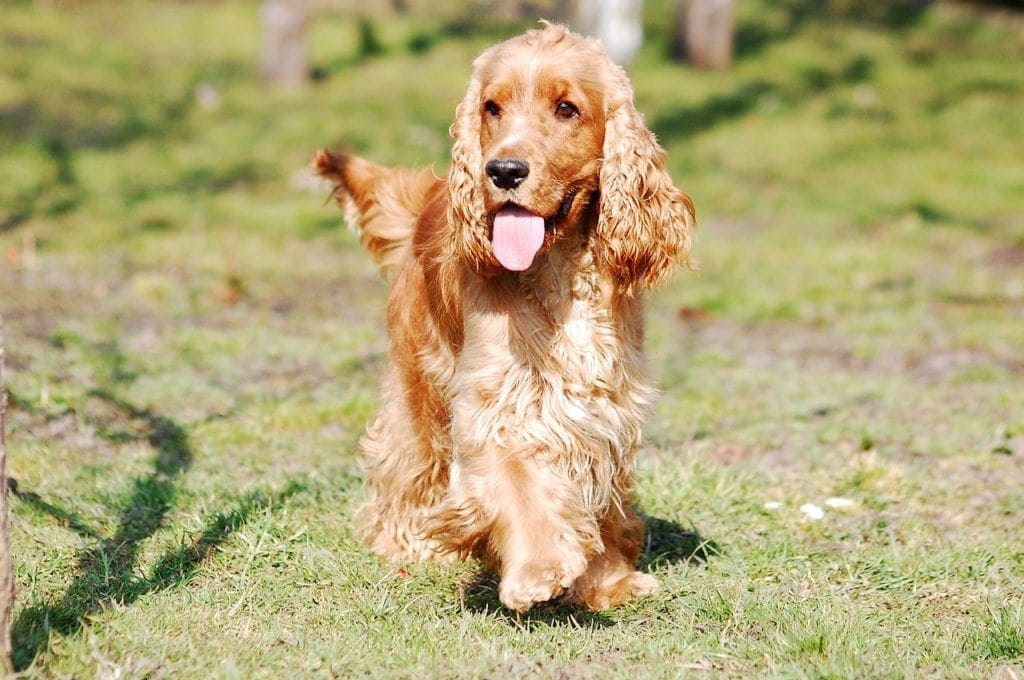
| Size: | Small |
| Lifespan: | 12–15 years |
| Colours: | Black, Orange, Tan, Liver, Brown, White |
| Dog Group: | Sporting |
| Family Dog: | Yes |
| Exercise Demands: | Moderate to High |
| Grooming Needs: | Moderate |
The Cocker Spaniel is a sporting dog and, even when kept as a family dog, it will require regular exercise. The Spaniel is especially at home in the water, so be prepared to carry a towel and offer baths to get rid of mud and dirt. And, because this is a sporting breed, the Cocker Spaniel does have some prey drive.
Loving and friendly with family, the Cocker Spaniel is intelligent and easy to train and works as a therapy dog, but some can be nervous and a little apprehensive, especially around strangers.
- Intelligent and easy to train
- Loving with family
- Can adapt to living in an apartment
- Coat and ears require a lot of care
- Can be nervous and apprehensive
6. Dachshund
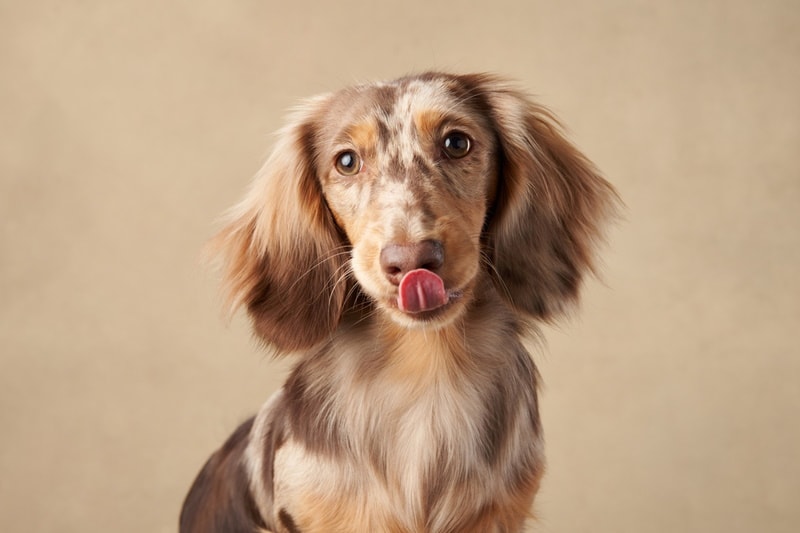
| Size: | Small |
| Lifespan: | 12–15 years |
| Colours: | Black, Tan, Liver, Brown |
| Dog Group: | Hound |
| Family Dog: | Yes |
| Exercise Demands: | Moderate |
| Grooming Needs: | Moderate |
The unique Dachshund is a scent hound by breeding but has become a very popular companion dog, especially for families with younger children. Some Dachshunds can form an especially close bond with one person and may even become jealous of the attention paid to their owner.
As well as being loving with people of all ages and sizes, the breed is playful but its most unique feature, the elongated and muscular body is also the cause of potential problems. They can injure themselves by jumping off furniture, and it is essential that they are not allowed to put on too much weight.
- Can adapt to life in an apartment
- Form close bonds with their owners
- Energetic and lively dogs
- They can be stubborn and mischievous
- Their elongated body can lead to injuries and illnesses
7. Staffordshire Bull Terrier
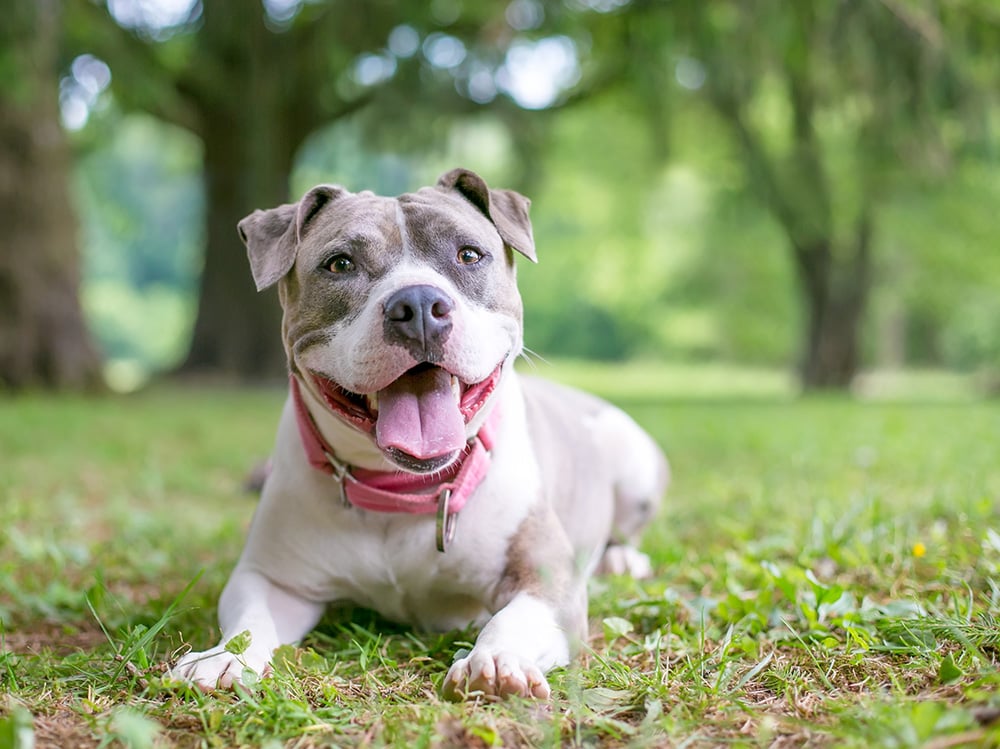
| Size: | Small to Medium |
| Lifespan: | 12–14 years |
| Colours: | Black, White, Fawn, Brown, Blue, Red |
| Dog Group: | Terrier |
| Family Dog: | Yes |
| Exercise Demands: | Moderate to High |
| Grooming Needs: | Easy |
The Staffordshire Bull Terrier, or Staffy for short, has endured a bad reputation because of unscrupulous owners breeding them for fighting. A well-adjusted Staffy from a reputable source, however, makes a lively, loving, and surprisingly gentle family companion.
Although considered a small dog in height, the Staffy’s build is muscular and robust. They can be aggressive towards other dogs and, while they are highly intelligent and typically eager to please, the Staffordshire Bull Terrier can be stubborn and will need regular and ongoing training and socialising.
- Loving family dog
- Especially gentle and loving with children
- Minimal shedding requires little grooming
- Energetic dog needs plenty of exercise
- Can be stubborn and ignore commands
8. Jack Russell Terrier
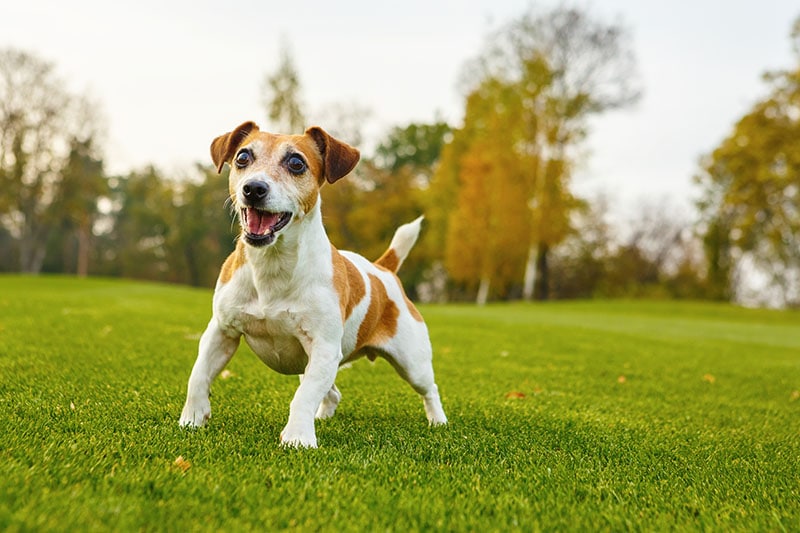
| Size: | Small to Medium |
| Lifespan: | 10–15 years |
| Colours: | Brown, White, Black |
| Dog Group: | Terrier |
| Family Dog: | Yes |
| Exercise Demands: | High |
| Grooming Needs: | Easy |
The Jack Russell Terrier is a small terrier-type dog that has a tenacious attitude, a strong prey drive, and a tendency to bark. It is also a loyal companion that loves to spend time outdoors and will relish any opportunity to play. The biggest challenge owning a Jack Russell is ensuring that it is well trained, although preventing chewing and digging can also be a big obstacle.
Potential owners need patience, and the breed is not generally recommended for first-time owners. If you do have experience in dog handling, however, and are prepared for the terrier’s antics, you will find a loving companion.
- Very intelligent breed
- Can make a loyal companion
- Loves to play
- Needs constant training from an experienced owner
- Escape artists
9. Border Collie
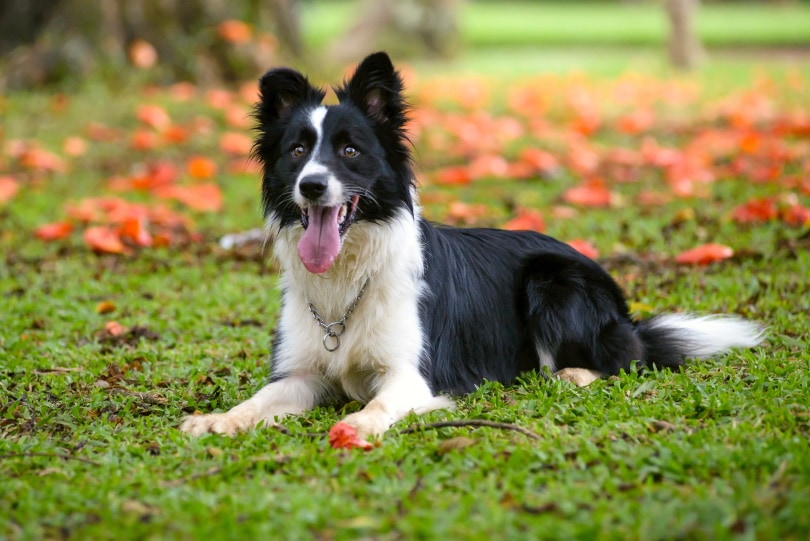
| Size: | Medium |
| Lifespan: | 12–15 years |
| Colours: | Black, White, Blue, Brown |
| Dog Group: | Herding |
| Family Dog: | Yes |
| Exercise Demands: | High |
| Grooming Needs: | Moderate to High |
The Border Collie is widely regarded as the most intelligent dog breed. When well-handled, this intelligence makes the breed easy to train, hence it is still widely used as a herding dog and working dog. The Collie is also known for having virtually limitless energy and, while the dog will love its family deeply, it doesn’t usually love long cuddles or time on the sofa.
Because the Collie is a herding dog, it does have a tendency to herd other pets and family members, especially children, and may be inclined to nip at heels. Once trained, however, the breed instinctively knows what is expected and can make an excellent pet for a very active family that wants a companion but not necessarily a lap dog.
- Highly intelligent dog that can be trained for many tasks
- Forms a close bond with owners
- Ideal for energetic and outdoor-loving owners
- Not overly demanding of attention
- Highly demanding of physical and mental stimulation
- Tendency to herd pets and family members
10. Chihuahua

| Size: | Small |
| Lifespan: | 10–18 years |
| Colours: | White, Black, Fawn, Chocolate |
| Dog Group: | Companion |
| Family Dog: | Yes |
| Exercise Demands: | Moderate |
| Grooming Needs: | Easy |
The Chihuahua is one of the smallest dog breeds in the world, and this companion dog is especially known for being a lap dog. They adapt well to living in an apartment and they love to spend time with their family. In fact, they not only thrive on but need companionship, so this is not the best breed for owners that work all day.
This breed does not take to strangers easily, which does make them good watchdogs, but can also lead to constant barking and yapping.
- A companion dog that thrives on companionship
- Can live up to 18 years
- Coat is easy to care for
- Can be prone to yapping
- Needs socialisation to get on with strangers
11. German Shepherd
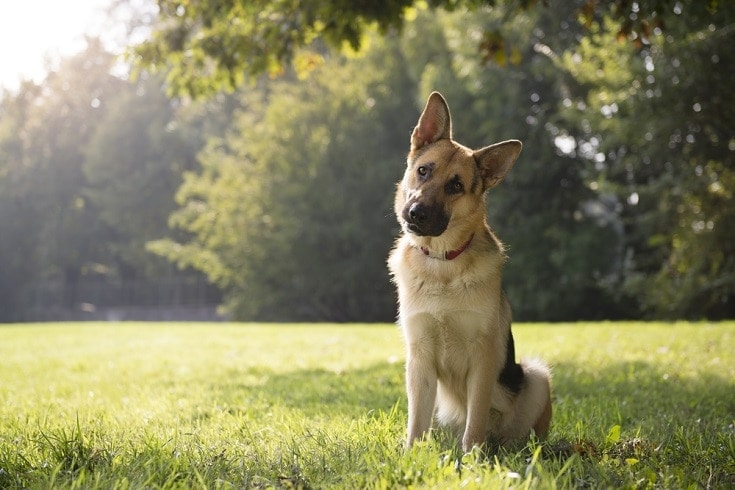
| Size: | Large |
| Lifespan: | 10–14 years |
| Colours: | Black, Brown, Tan |
| Dog Group: | herding |
| Family Dog: | Yes |
| Exercise Demands: | High |
| Grooming Needs: | Moderate to High |
The German Shepherd is an intelligent breed that takes well to training. Although originally bred for herding, the modern breed finds use as a therapy dog as well as in search-and-rescue and police work. It also makes a good family pet, as long as you have the time to provide adequate exercise and ensure that yours is well-trained and socialised. If you don’t provide adequate exercise, the German Shepherd can be prone to chewing, digging, and barking.
- Intelligent dog that is easy to train
- Excellent working dogs
- Forms a close bond with their owner
- Requires regular brushing and grooming
- Needs a lot of exercise
12. Golden Retriever
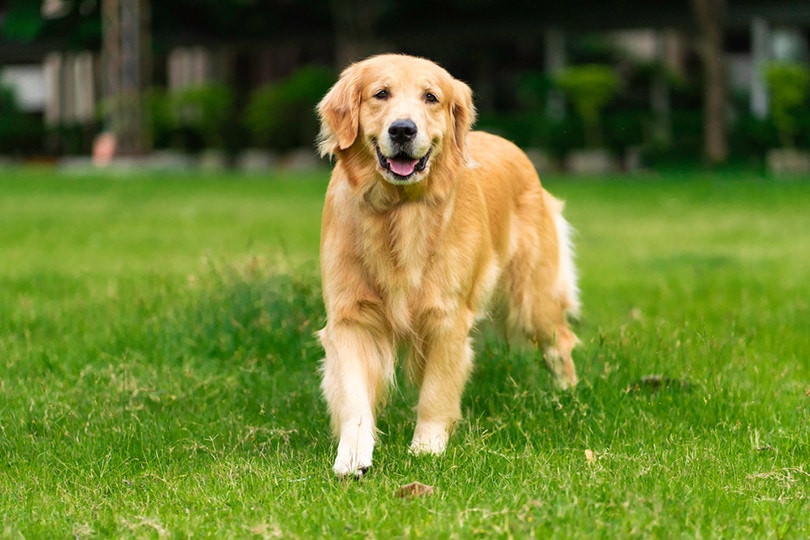
| Size: | Medium |
| Lifespan: | 10–12 years |
| Colours: | Gold |
| Dog Group: | Sporting |
| Family Dog: | Yes |
| Exercise Demands: | High |
| Grooming Needs: | High |
The Golden Retriever is a loving, caring, and sociable dog. It was first bred as a retriever but is now more commonly kept as a family companion. This dog requires companionship and might, in fact, suffer separation anxiety if you are away from the house too long.
This is a playful breed that retains puppy characteristics into adulthood and is good with children and strangers but does have high energy requirements and is prone to heavy shedding.
- Friendly with family, friends, and strangers
- Loves to play
- Can be well trained for a multitude of tasks
- May become anxious if left alone too long
- Can be boisterous so may cause accidental injuries
13. Shih Tzu
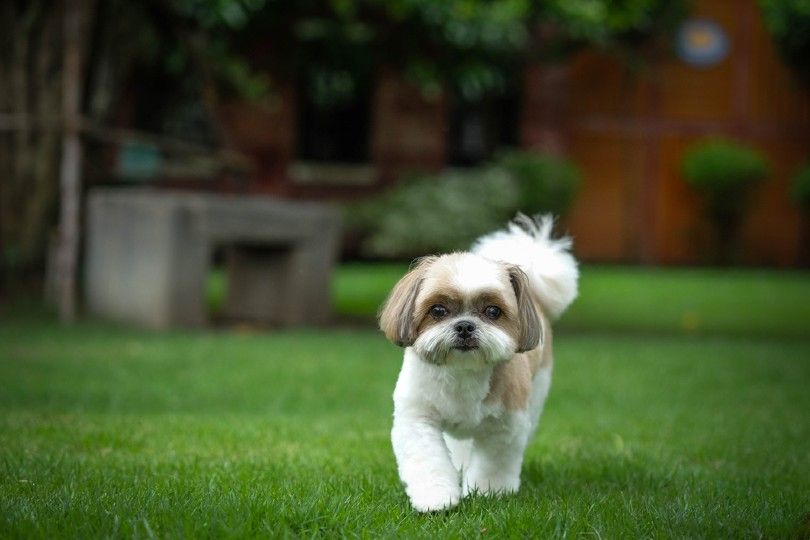
| Size: | Small |
| Lifespan: | 10–16 years |
| Colours: | Brown, Red, Black, White |
| Dog Group: | Companion |
| Family Dog: | Yes |
| Exercise Demands: | Easy |
| Grooming Needs: | High |
The Shih Tzu is a small companion dog that is considered a good choice of pet that wants a loyal companion that won’t leave their sides but doesn’t want to have to provide excessive amounts of exercise. However, they can be trained to do well in dog agility and other canine classes.
The breed is good with children, but they are small so young children need to take care when handing the Shih Tzu. They do require plenty of grooming and can be difficult to house train, but they will make friends wherever they go.
- A loyal companion that craves attention
- Makes friends with just about anybody
- Minimal exercise requirements
- Can’t be left alone long
- Small size means they are easily injured during rough play
14. Pug
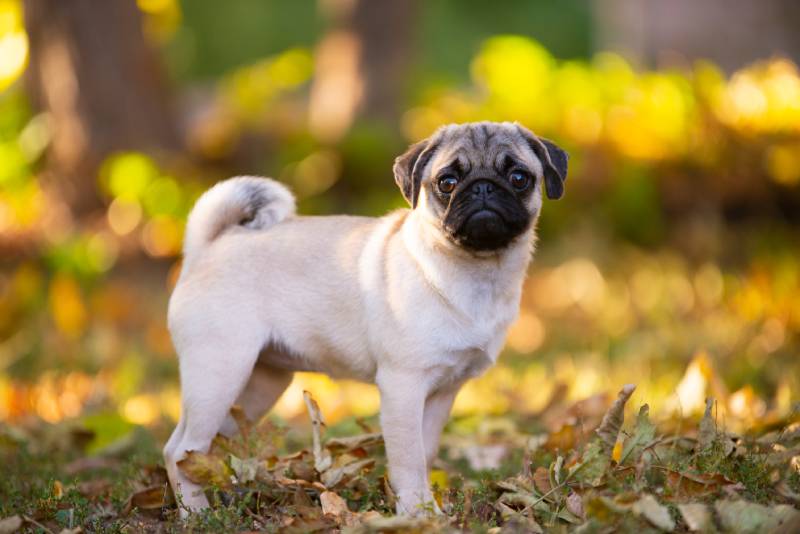
| Size: | Small |
| Lifespan: | 12–15 years |
| Colours: | Black, Tan, Fawn |
| Dog Group: | Companion |
| Family Dog: | Yes |
| Exercise Demands: | Moderate |
| Grooming Needs: | Low to Moderate |
The Pug has a funny face with big eyes and a wrinkled mouth. It easily makes friends thanks to its facial features, and they are especially friendly to those that are willing to play. They are very close to their human handlers, which is good if you are looking for a companion that won’t leave you alone, but means this isn’t the best breed for owners that are at work or school all day.
Although the breed is intelligent, this doesn’t necessarily mean they are easy to train because they do have a very strong mind of their own.
- Loyal companion that craves attention
- Makes friends easily
- Enjoys playing
- Can live in apartments as well as houses
- Can be yappy
- Heavy shedding breed
- Can suffer separation anxiety if left alone too long
15. Yorkshire Terrier

| Size: | Small |
| Lifespan: | 12–15 years |
| Colours: | Black, Blue, Tan, Gold |
| Dog Group: | Terrier |
| Family Dog: | Sometimes |
| Exercise Demands: | Moderate to High |
| Grooming Needs: | High |
The Yorkshire Terrier is another small breed but, unlike the Pug and the Shih Tzu, it has a working background having been bred to catch rats in the mills of Yorkshire, England. Its size hides a very brave heart and a willingness to get itself in trouble, and potential owners need to be understanding, as well as willing to provide plenty of physical and mental stimulation.
This is another small breed that tends towards vocalisation, and the Yorkie will bark at just about anything, so one of the first commands you will need to train is the “quiet” command. The Yorkie can make a good family pet but may be wary of very small children that are a bit grabby.
- Brave and fun dog that enjoys adventure
- Bonds closely with its owners
- Can be trained for physical and mental tasks
- Coat requires a lot of care
- Needs to be trained to quieten down
16. Cavalier King Charles Spaniel
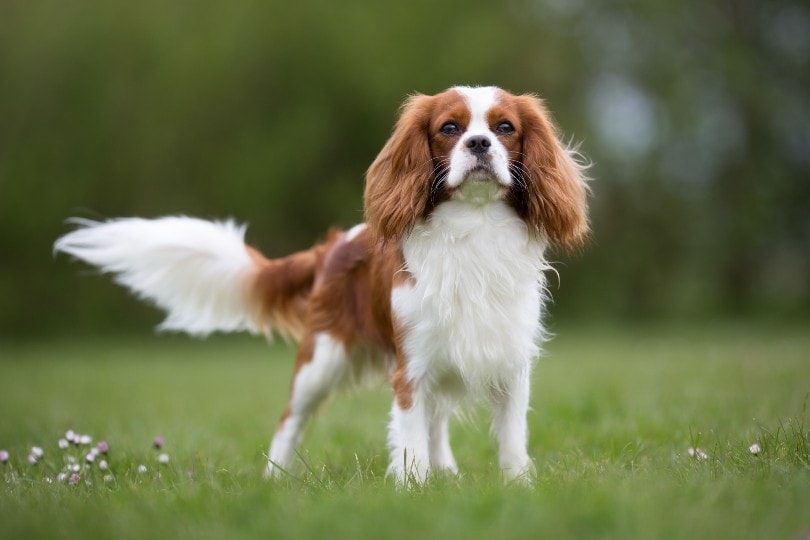
| Size: | Small |
| Lifespan: | 9–15 years |
| Colours: | Black, Brown, Tan, White |
| Dog Group: | Companion |
| Family Dog: | Yes |
| Exercise Demands: | Moderate |
| Grooming Needs: | High |
The Cavalier King Charles Spaniel was bred from Spaniels but was bred as a companion dog rather than a working dog. This means that owners can enjoy the friendly and fun nature of a Spaniel but in a smaller package and with fewer energy requirements. The breed makes friends easily, gets on with people of all ages, and follows its owners everywhere, seeking attention.
They are also considered quite easy to train, but their coat does require a lot of attention and the breed is prone to putting on weight easily, which can lead to an overweight dog so treats should be given sparingly.
- Makes friends easily
- Gets along with all family members
- Quite easy to train
- Prone to putting on weight
- Coat takes a lot of care and grooming
17. Labradoodle
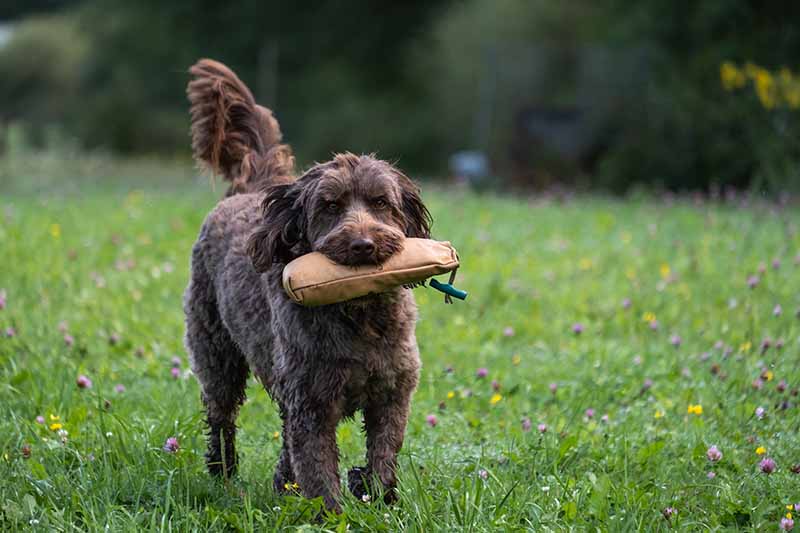
| Size: | Medium |
| Lifespan: | 12–14 years |
| Colours: | Gold, Red, Black, Chocolate, Cream |
| Dog Group: | Hybrid |
| Family Dog: | Yes |
| Exercise Demands: | High |
| Grooming Needs: | Moderate to High |
The Labradoodle is a cross between the popular Labrador and the so-called hypoallergenic Poodle. It is a designer breed that has shot up in popularity because it combines the loving and friendly nature of the Labrador with the head-down, hard-working attitude of the Poodle. This combination also means that the Labradoodle, which is a very energetic and lively dog, is intelligent and eager to please, so it is considered easy to train.
- Good choice for dog allergy sufferers
- Intelligent and eager to please so easy to train
- Friendly with just about everybody
- Needs plenty of exercise
- May accidentally injure small children due to excitedness
18. Beagle
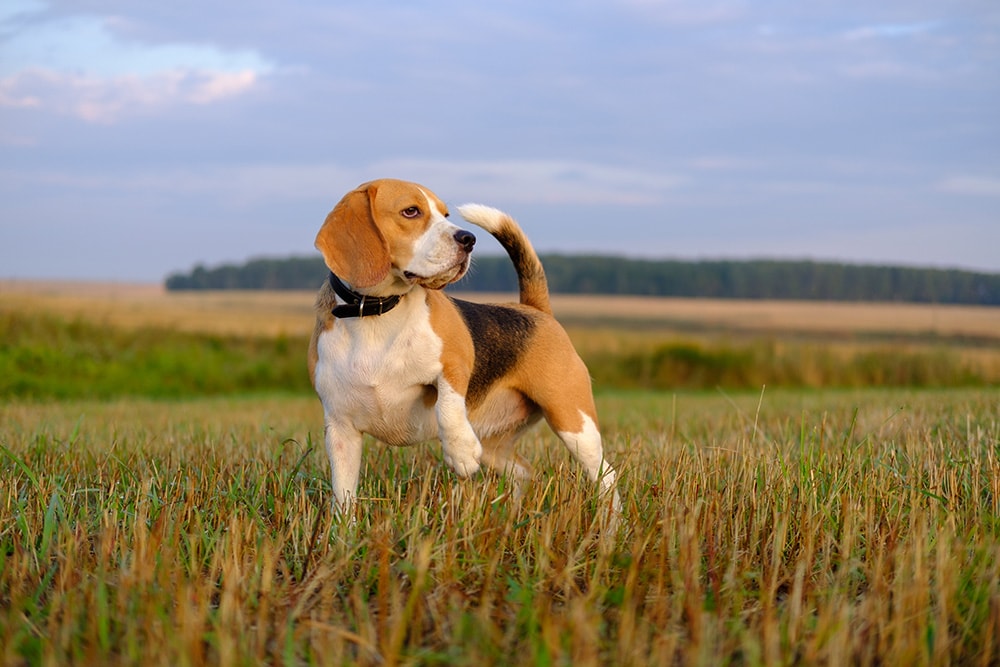
| Size: | Small to Medium |
| Lifespan: | 10–15 years |
| Colours: | Black, Brown, White |
| Dog Group: | Hound |
| Family Dog: | Yes |
| Exercise Demands: | High |
| Grooming Needs: | Easy to Moderate |
The Beagle is a small, attractive, energetic hound dog. It is a loving and friendly dog that is also inquisitive and loves to explore.
Beagles have a series of vocalisations, although they are not usually prone to being too yappy, and this intelligent breed not only enjoys training but especially enjoys tasks that require them to use their nose and incredible sense of smell. With enough exercise, this breed can adapt well to life in an apartment.
- Can adapt to living in an apartment
- Friendly and eager to meet new people
- Can be easily trained
- Can sniff out and retrieve just about anything
- Can be challenging to housetrain
19. English Springer Spaniel
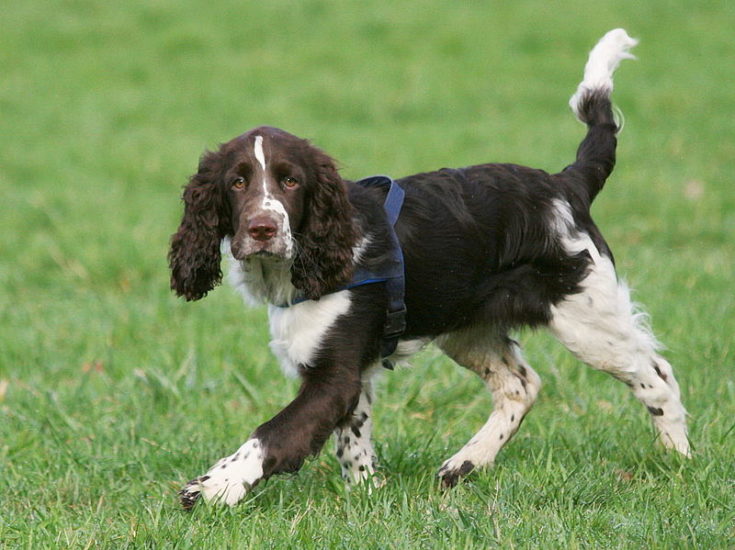
| Size: | Medium |
| Lifespan: | 9–15 years |
| Colours: | Liver, White, Brown, Black, Lemon |
| Dog Group: | Sporting |
| Family Dog: | Yes |
| Exercise Demands: | High |
| Grooming Needs: | High |
The English Springer Spaniel was bred to flush birds out for hunters and to retrieve them once killed. Still popular as a hunting companion, the Springer Spaniel is also a popular family companion. They tend to be good with other pets, get along with all family members, and will befriend new people quickly.
Springers are also easy to train and take especially well to canine sports and obedience classes that keep their minds and bodies active. However, they do require a lot of exercise and have high grooming and care requirements.
- Easy to train
- Good with other animals
- Friendly with all people
- Need a lot of exercise and grooming
20. Pomeranian
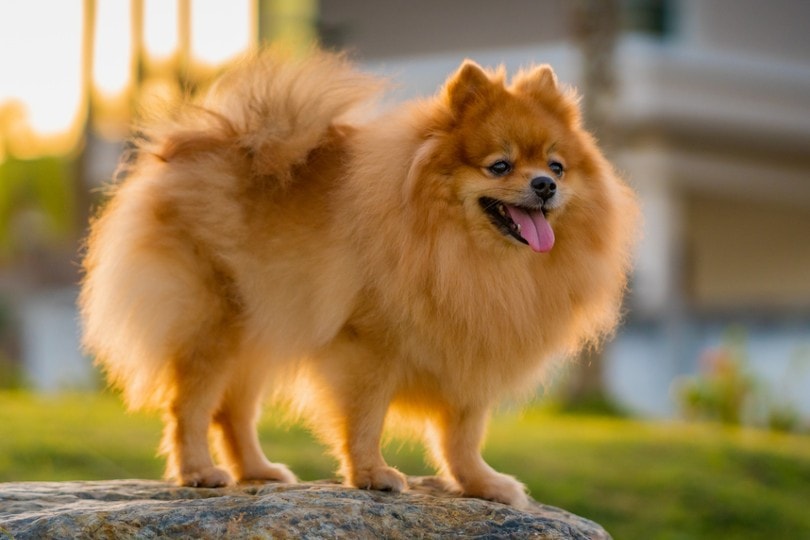
| Size: | Small |
| Lifespan: | 12–16 years |
| Colours: | White, Black, Blue, Red |
| Dog Group: | Companion |
| Family Dog: | Usually |
| Exercise Demands: | Low to Moderate |
| Grooming Needs: | Moderate to High |
Finally, on our list of the 20 most popular dog breeds in the UK is the small companion dog, the Pomeranian. Although descended from sledding dogs, the Pomeranian is primarily seen as a companion dog. They are intelligent and they are incredibly loyal family pets.
They can also be quite feisty and do not always get along with other dogs, often picking fights with much larger breeds. Socialising and training can prevent this from being a problem. The small dog needs plenty of attention but can adapt well to living in an apartment and does not require much exercise.
- Can live in an apartment
- Loyal to their owners
- Don’t need much exercise
- Coats need plenty of grooming
- May not get along with other dogs
Wrapping Up
The Labrador Retriever remains the most popular breed of dog in the UK, although more people own mixed-breed dogs than any other type. However, the best breed of dog for you and your family is ultimately determined by your likes and your lifestyle. While some may see the incessant exercise demands of a Border Collie as off-putting, if you’re an outdoorsy person that loves to hike in the hills or run in the forest, a Collie could be your ideal dog.
- You might also be interested in: 10 Best Dog Foods in the UK
Featured Image Credit: SasaStock, Shutterstock
Contents
- The Top 20 Most Popular Dog Breeds in the UK
- 1. Mixed Breed
- 2. Labrador Retriever
- 3. Cockapoo
- 4. French Bulldog
- 5. Cocker Spaniel
- 6. Dachshund
- 7. Staffordshire Bull Terrier
- 8. Jack Russell Terrier
- 9. Border Collie
- 10. Chihuahua
- 11. German Shepherd
- 12. Golden Retriever
- 13. Shih Tzu
- 14. Pug
- 15. Yorkshire Terrier
- 16. Cavalier King Charles Spaniel
- 17. Labradoodle
- 18. Beagle
- 19. English Springer Spaniel
- 20. Pomeranian
- Wrapping Up

